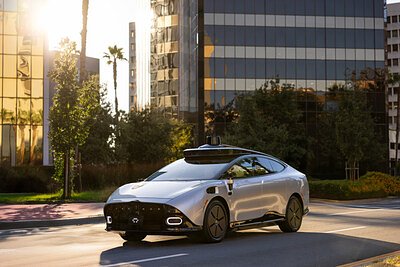
LA Auto Show Signals Shift to Commercial Fleets & Beyond: EVs, Air Taxis & Sustainable Mobility
AutoMobility LA 2025 showcases a broadening automotive landscape, from electric commercial fleets and urban air mobility to sustainable boating solutions. The industry is aggressively pursuing innovation beyond the consumer car.
LA Auto Show Signals Shift to Commercial Fleets & Beyond: EVs, Air Taxis & Sustainable Mobility
LOS ANGELES, CA – November 14, 2025 – AutoMobility LA 2025, the industry and press day preceding the Los Angeles Auto Show, is signaling a significant evolution in the automotive sector. While consumer electric vehicles remain central, the event is increasingly focused on the burgeoning market for commercial fleets, alongside ambitious innovations in urban air mobility and sustainable transportation solutions. The expanded 'Innovation Plaza' serves as a hub for these developments, highlighting a broadening ecosystem beyond the traditional personal vehicle.
Fleet Electrification Takes Center Stage
The commercial fleet segment is rapidly emerging as a key driver of EV adoption and a major revenue opportunity for automakers and technology companies. This year’s event reflects that trend, with a dedicated 'Fleet Innovation Showcase' featuring players like Rivian, Honda, and Ford – represented by Lithia Motors. Beyond simply showcasing electric vans and trucks, these companies are presenting integrated solutions encompassing charging infrastructure, fleet management software, and digital services.
“The total cost of ownership for electric fleets is becoming increasingly compelling, especially when factoring in reduced maintenance and fuel costs,” said one industry analyst. “However, the biggest hurdle remains the deployment of sufficient charging infrastructure.” Companies like Voltera are actively addressing this challenge with their ‘Infrastructure-as-a-Service’ model, alleviating the capital expenditure burden for fleet operators. This approach allows fleets to focus on their core business while scaling their electrification efforts.
The focus on commercial fleets isn't limited to last-mile delivery. Honda’s presentation of a Class 8 hydrogen fuel cell truck concept highlights the potential of alternative fuels for heavy-duty transport, while the involvement of GM Envolve and Volkswagen demonstrates the broader industry interest in this segment.
Beyond the Road: Urban Air Mobility & Electric Boats
While terrestrial transportation remains dominant, AutoMobility LA 2025 is also showcasing innovations that could redefine how we move within and between cities. Several companies are demonstrating electric vertical takeoff and landing (eVTOL) aircraft, commonly known as ‘flying cars.’ Pivotal, with its Helix aircraft, is aiming to deliver a personal air mobility solution for both consumer and commercial applications. While regulatory hurdles and public acceptance remain significant challenges, the potential for eVTOLs to alleviate urban congestion and provide faster, more efficient transportation is undeniable.
The push for sustainable mobility extends to the water as well. Arc Boats is gaining traction with its high-performance electric boats, challenging the traditional reliance on gasoline-powered watercraft. “The electric boat market is rapidly expanding, driven by growing environmental awareness and advancements in battery technology,” explains a source close to Arc Boats. “We're seeing a surge in demand for electric boats for recreational use, as well as for commercial applications like water taxis and eco-tourism.” This is further fueled by brands like Forza X1 and Candela.
Navigating a Complex Transition
The shift towards electric and autonomous vehicles, coupled with the emergence of new mobility solutions, is not without its challenges. Grid capacity and the availability of charging infrastructure remain significant hurdles for widespread EV adoption. Securing adequate power supply and navigating utility connections for high-speed charging can be complex and time-consuming.
“The transition requires a collaborative effort between automakers, technology companies, government agencies, and utility providers,” said one industry consultant. “We need to invest in upgrading the grid, streamlining permitting processes, and incentivizing the deployment of charging infrastructure.”
The development of autonomous driving technology is also progressing at a rapid pace, but achieving full Level 5 autonomy remains a distant goal. Companies like Rivian and Honda are deploying advanced driver-assistance systems (ADAS) and Level 3 autonomous driving capabilities, but ensuring safety and reliability in all conditions remains a top priority. The involvement of tech companies alongside the traditional automakers emphasizes the importance of software and AI in shaping the future of transportation.
Furthermore, the rise of micromobility solutions, such as electric scooters and bikes, is reshaping urban landscapes and providing alternative modes of transportation for short distances. The inclusion of these solutions in the AutoMobility LA showcase highlights the growing recognition of their potential to address urban congestion and promote sustainable transportation. Companies like Fastport will showcase the versatility of solutions aimed at micromobility and last-mile delivery.
📝 This article is still being updated
Are you a relevant expert who could contribute your opinion or insights to this article? We'd love to hear from you. We will give you full credit for your contribution.
Contribute Your Expertise →